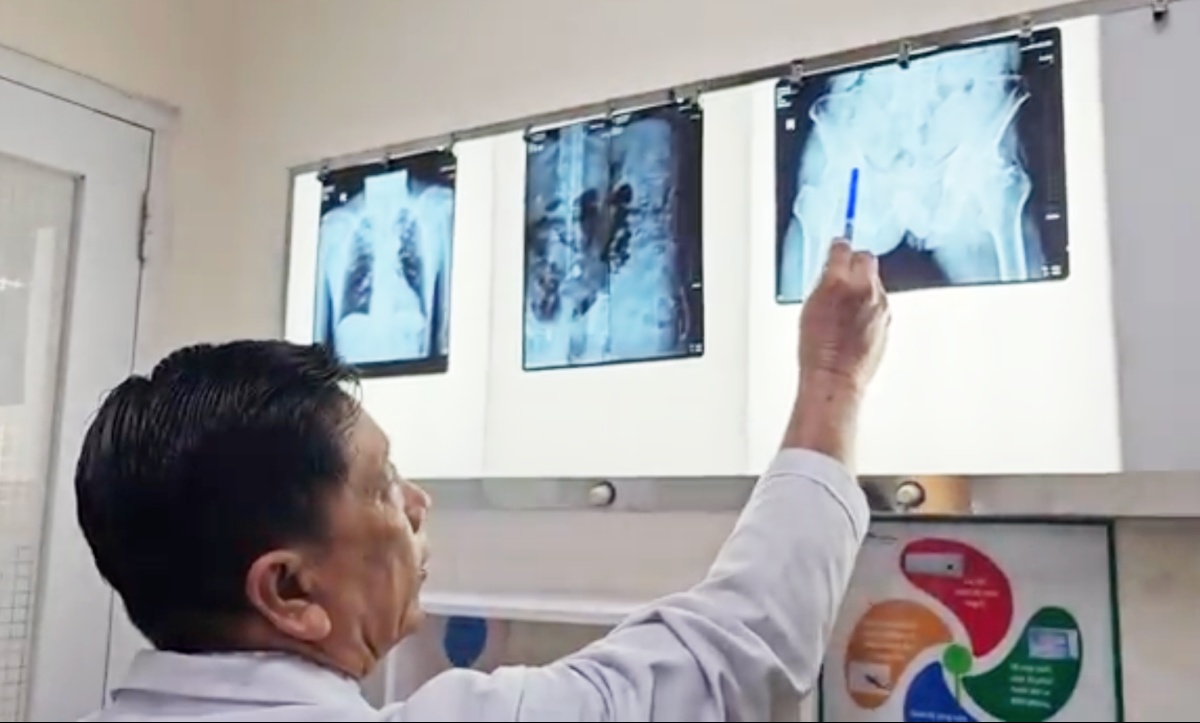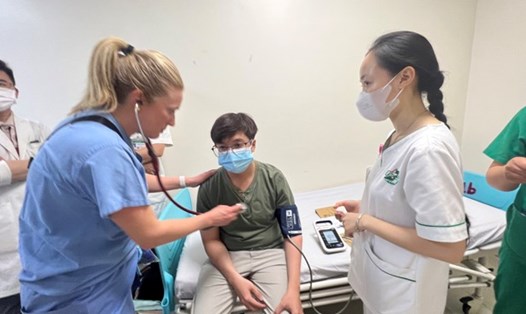Patient N.V.T (45 years old, Chau Thanh district, Hau Giang province) has had pain and limited mobility in the cervical spine for many years. Recently, the patient felt pain and fatigue in the neck area, limited neck bending, so he went to Hoan My Cuu Long Hospital (Can Tho city) for treatment.
Through examination and necessary paraclinical tests, the doctor diagnosed the patient with ankylosing spondylitis. The patient had left hip stiffness in a 90-degree flexed position, the right hip could still flex and extend within near-normal limits but was in so much pain that he could not walk or stand.

After multidisciplinary consultation, the doctors decided to use total left hip replacement surgery to treat the patient.
Immediately after surgery, the patient's health was stable, he recovered well and was instructed to do physical therapy to restore function early. The patient was discharged 7 days after surgery and was followed up for outpatient examination according to the schedule of the Department of Neurosurgery - Musculoskeletal.

Master, Doctor Le Dung - Head of the Department of Neurosurgery - Musculoskeletal, Hoan My Cuu Long Hospital - said that ankylosing spondylitis is a chronic inflammatory disease characterized by pain and damage to the sacroiliac joints, spine and lower limb joints. The disease causes some vertebrae to fuse together, causing swelling, leading to difficulty in movement, hunchback, scoliosis and disability.
Patients with ankylosing spondylitis have symptoms that are easily confused with other diseases, so they are easily missed or misdiagnosed, affecting the quality of life and increasing the risk of disability. If ankylosing spondylitis is diagnosed late and not treated promptly, it will lead to a gradual fusion of the joints and spine, creating a bad posture (in the final stage of the disease, the patient often has a hunchback).
Dr. Dung recommends that as soon as there are signs of musculoskeletal disease, people should quickly visit a specialized hospital with a team of experienced doctors and modern medical equipment. This will help improve treatment effectiveness and reduce the rate of complications after surgery.









